Norway spruce (NS)
Norway spruce is a European native and was present in Britain pre-glacial. As an early reintroduction (before 1550) it was widely planted and is an important forest tree but fell out of favour when the more productive Sitka spruce (Picea sitchensis) became available. More recently the arrival in Britain of the European spruce bark beetle (Ips typographus) poses a distinct threat to both species. However, with active control of Ips, Norway spruce remains a viable alternative to Sitka spruce, particularly on drier sites but not on poor, wet and exposed sites where Sitka is the best choice.
Norway spruce is categorised as a principal tree species. These are tree species where silvicultural knowledge provides confidence to enable successful deployment across Britain. The species are either already widely used or are increasing in usage. They will continue to be important unless affected by a new pest or disease or become adversely affected by climate change.
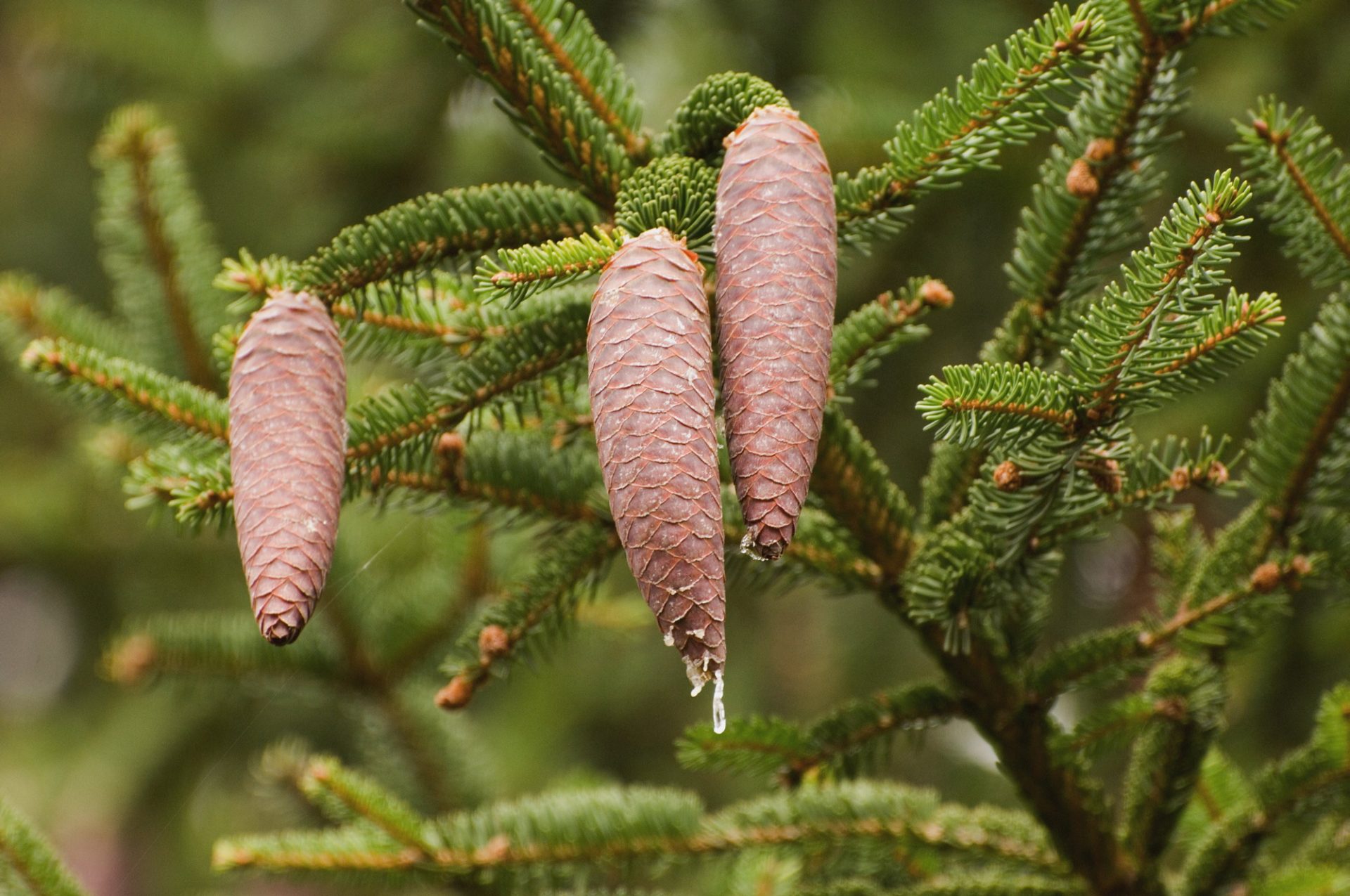
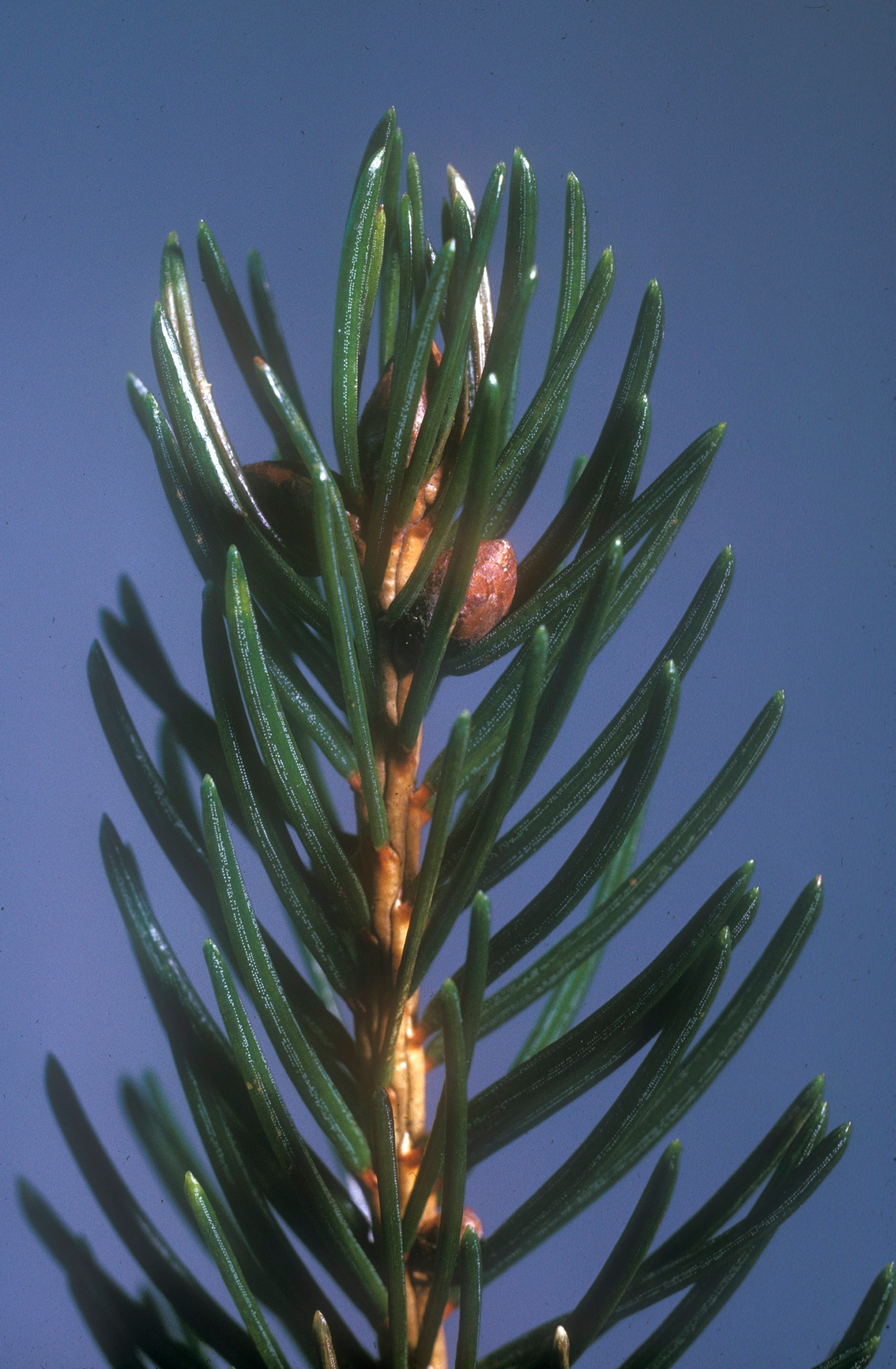
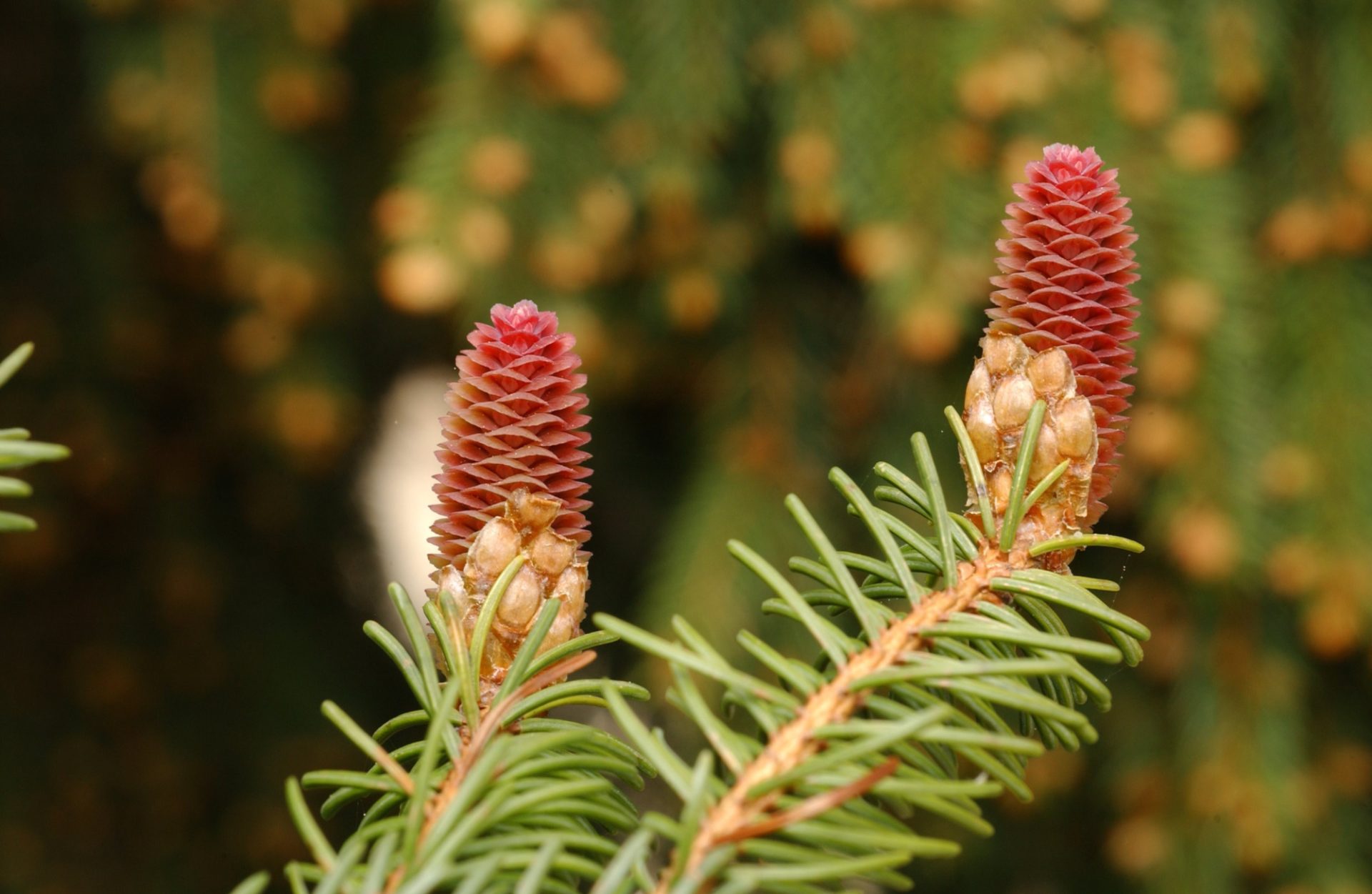
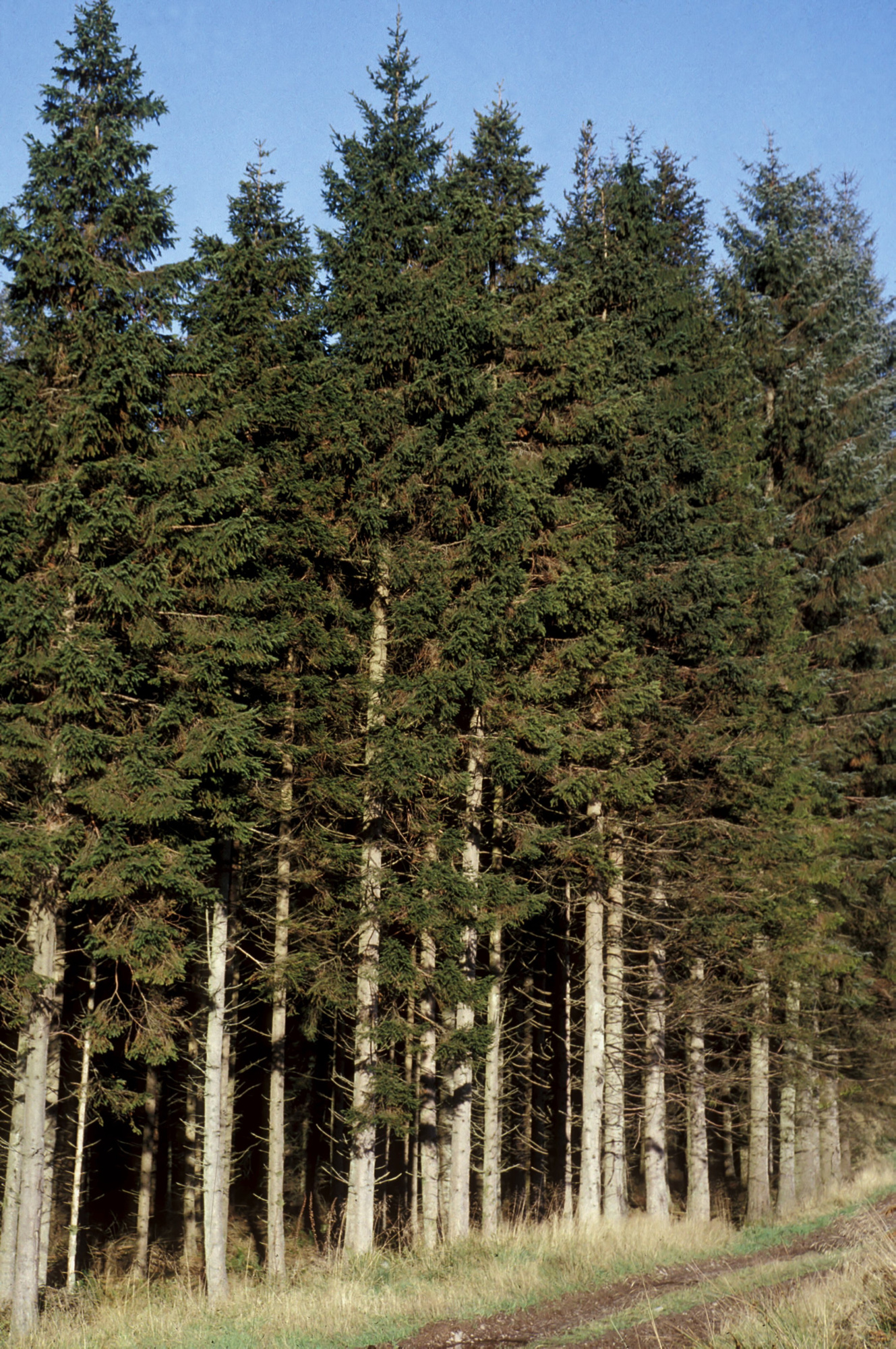
Range
Native to mountain areas of central and southern Europe and has a wide distribution across eastern and northern Europe. It is a major European timber species and has been widely planted outside its native range.
Provenance Choice
Provenance trials in the last century suggested that material from eastern Europe (e.g., Romania, southern Poland) was preferable while French, Scandinavian or Alpine provenances should be avoided.
Key Properties
Site Requirements
Accommodating regarding climatic conditions if annual rainfall exceeds 850 mm although it can grow well on moist soils in drier regions. It is cold hardy but suffers from exposure, air pollution, and is vulnerable to late spring frosts at an early age (although less than Sitka spruce). Best growth is attained on moist, sufficiently aerated soils of poor to medium fertility such as sandy loams. Suffers from heather check and nitrogen deficiency on very nutrient poor soils.
Further detail on the site requirements of Norway spruce in current and future climates can be examined using the Forest Research Ecological Site Classification Decision Support System (ESC).
ECOLOGICAL SITE CLASSIFICATION TOOL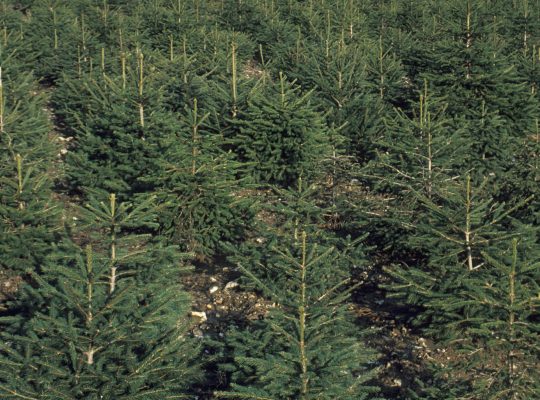
Silviculture
Plant at least 2500 trees ha-1 if good timber quality is to be maintained. Both bareroot and containerised seedlings should be of robust planting stock. Norway spruce is more sensitive to establishment conditions than Sitka and can take appreciably longer to show vigorous growth and to close canopy. It is palatable to deer, so protection is important. At 50-70 years, typical rotation lengths in even-aged stands are longer than for Sitka, and yield classes are also 2-4 m3 ha-1 yr-1 lower on a site for site basis.
The slower height growth of Norway spruce means that it is suited to growing in mixtures with other conifers or broadleaves. As a shade tolerant species, it is well suited to management in a range of irregular silvicultural systems. A broad shallow root system can make Norway spruce susceptible to drought conditions.
In British conditions, coning does not begin until trees are around 40 years old, and good cone crops occur at irregular intervals of between 5 and 10 years. As a result, natural regeneration is less common than in other conifers, although it can be abundant in well thinned older stands. The seeds are a favourite of red squirrels and existing stands in northern Britain are sometimes retained on long rotations to ensure continuity of this food supply.
During the latter half of the last century, interest in Norway spruce declined because of Sitka spruce’s superior productivity and greater tolerance of exposure. However, in a changing climate, Norway spruce’s ability to withstand drier conditions and suitability for growing in mixtures mean that it is of increasing interest. Possible alternatives could include western red cedar and Japanese red cedar provided soil conditions are suitable.
Pests and Pathogens
Green spruce aphid (Elatobium abietinum) can damage Norway spruce in severe outbreaks and can be noticeable after mild winters. Norway spruce is susceptible to conifer root and butt rot (Heterobasidion annosum) and other decay fungi such as Stereum.
In Europe, the larger eight-toothed European spruce bark beetle (Ips typographus) is a significant pest on Norway spruce and is killing trees as a result of mass beetle attack. Discovered in Kent in 2018 and subsequently in 2021 the beetle is now spreading throughout southern England and is the subject to official action. Any suspected cases in mainland Britain should be reported via TreeAlert.
See our other tools and resources
Further Resources
Internal
In addition to the general sources of information for species the following are useful for Norway spruce.
Kerr, G. and Clarke, T-K. (2023) Summary of FR Seed Origin Trials on Norway spruce (Picea abies (L.) Karst.). Forest Research, Alice Holt Lodge, Farnham, Surrey, GU10 4LH
External
In addition to the general sources of information for species the following are useful for Norway spruce.
Caudullo, G., Tinner, W., de Rigo, D., 2016. Picea abies in Europe: distribution, habitat, usage, and threats. In: San-Miguel-Ayanz, J., de Rigo, D., Caudullo, G., Houston Durrant, T., Mauri, A. (Eds.), European Atlas of Forest Tree Species. Publ. Off. EU, Luxembourg, pp. e012300+
Wilson, Scott McG. (2011) Using alternative conifers for productive forestry in Scotland. Forestry Commission Scotland, Edinburgh.




